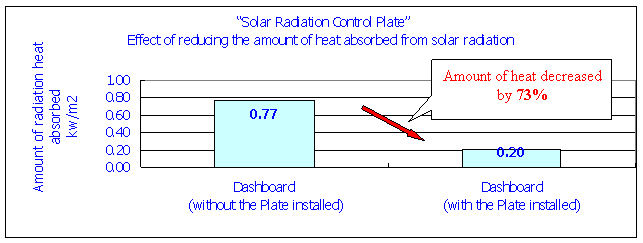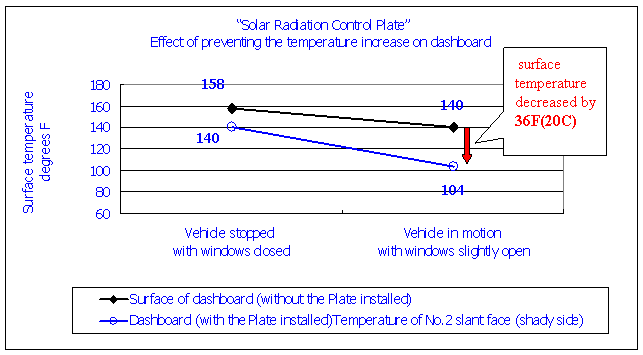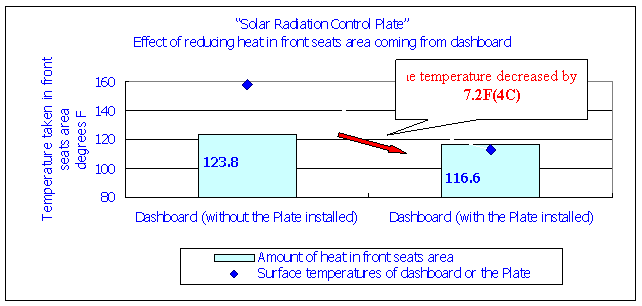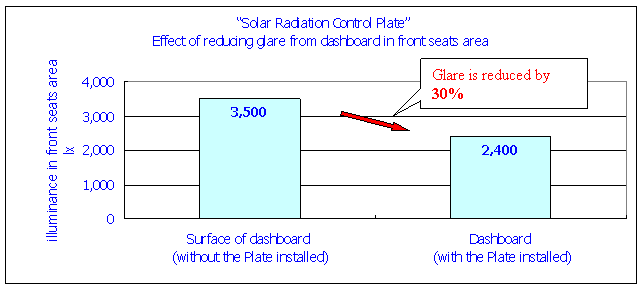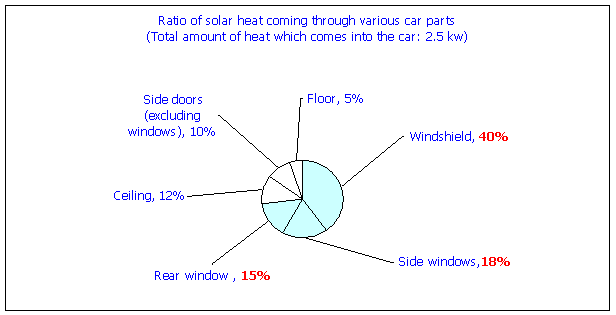Car mileage improved by 10% (in summer season)
Solar Radiation Control Plate
To be placed in the areas of a vehicle absorbing the most sunlight
@AUTOMOTIVE INTERIOR MEMBER
Patent No.: US 8,047,598, B2
Date of Patent: Nov.1,2011
Registered Japan Patent No.: 4212636
@Present problem@@@@@@@@@@@@@@@@@@@@@@@@@@
► When the car air conditioner is on, fuel consumption increases by about 40%.
It has been proven that almost all the above-mentioned load is actually created by gsolar radiation coming through car windowsh. The gSolar Radiation Control Plateh will greatly reduce heat which results from this solar radiation.
Performance of gSolar Radiation Control Plateh
(Most effective in summer season and sunny weather)
‘ The product will block more than 70% of solar radiation heat.The following are the advantages when the Solar Radiation Control Plate is installed on the dashboard and the rear window areas.
► Reduction of car air-conditioning load: 30%
► Improvement of car mileage: 10 %
► Decrease of heat in the front seats area: 7.2 degrees F (4C)
The heat coming from the dashboard is reduced to a negligible amount.
► Reduced glare in the front seats area: 30%
The glare reflected from the dashboard is reduced to almost nothing.
(Note) The above data was obtained using a 1500 cc-engine sedan type car.





